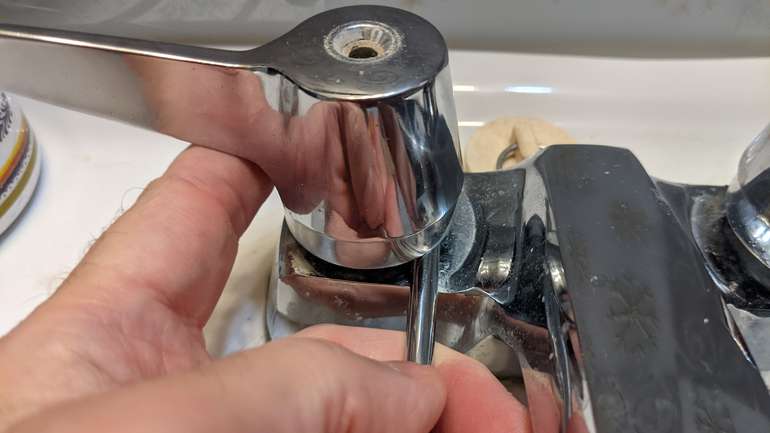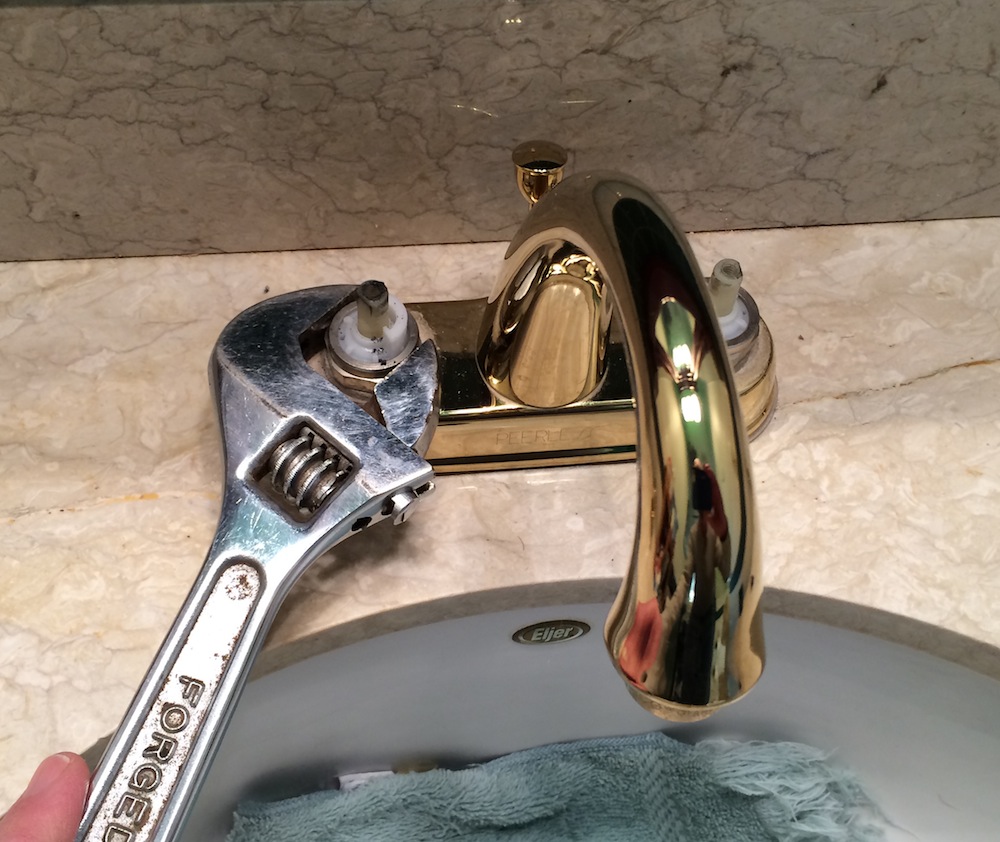When It's Vital to Fix a Leaking Faucet
When It's Vital to Fix a Leaking Faucet
Blog Article
Here in the next paragraphs you will find a lot of wonderful facts concerning How to Fix a Dripping or Leaky Faucet .

Trickling taps could feel like a small aggravation, but their impact goes beyond simply the aggravation of the audio. From drainage to incurring unnecessary financial prices and wellness dangers, disregarding a trickling faucet can lead to numerous repercussions. In this short article, we'll look into why it's crucial to address this usual home concern immediately and effectively.
Wastage of Water
Ecological Impact
Trickling faucets add substantially to water wastage. According to the Epa (EPA), a single tap trickling at one drip per second can squander more than 3,000 gallons of water per year. This not just pressures water resources but additionally impacts communities and wildlife based on them.
Financial Costs
Increased Water Costs
Past the environmental influence, dripping taps can blow up water bills considerably. The gathered wastage gradually equates into higher energy expenditures, which might have been prevented with prompt repair work.
Prospective Residential Property Damage
Furthermore, prolonged trickling can cause damage to components and surfaces bordering the tap. Water accumulation can create staining, corrosion, and also structural problems if left unattended, causing additional repair service costs.
Health and wellness Problems
Mold and Mold Development
The constant visibility of moisture from a leaking tap develops a perfect setting for mold and mildew and mildew development. These fungis not just compromise indoor air high quality however additionally posture health dangers, particularly for individuals with respiratory system conditions or allergic reactions.
Waterborne Diseases
Stagnant water in trickling taps can become a breeding ground for germs and various other virus, increasing the risk of waterborne diseases. Contaminants such as Legionella bacteria grow in stationary water, possibly bring about significant ailments when consumed or breathed in.
DIY vs. Expert Repair work
Advantages and disadvantages of Do It Yourself Repair
While some may attempt to fix a dripping tap themselves, do it yourself fixings come with their own set of obstacles. Without correct knowledge and tools, DIY efforts can intensify the issue or bring about insufficient repair work, extending the problem.
Advantages of Employing a Professional Plumber
Hiring a specialist plumber guarantees that the underlying source of the leaking tap is attended to properly. Plumbers possess the expertise and devices to detect and fix faucet issues effectively, conserving time and minimizing the risk of additional damages.
Step-by-Step Overview to Dealing With a Dripping Tap
Devices Called for
Prior to trying to fix a dripping faucet, gather the necessary tools, including a flexible wrench, screwdrivers, substitute components (such as washing machines or cartridges), and plumber's tape.
Common Faucet Issues and Their Solutions
Recognize the sort of tap and the certain problem causing the drip. Common troubles consist of worn-out washers, rusty shutoff seats, or malfunctioning O-rings. Refer to manufacturer guidelines or on the internet tutorials for step-by-step advice on fixings.
Preventive Measures
Routine Upkeep Tips
To stop trickling faucets, do regular upkeep such as cleansing aerators, inspecting for leaks, and replacing worn-out parts quickly. Furthermore, think about setting up water-saving gadgets or upgrading to much more effective fixtures.
Value of Prompt Fixes
Attending to leaking faucets as soon as they're noticed protects against more water waste and prospective damage, inevitably conserving both water and money in the future.
Effect On Building Worth
Understanding of Well-Maintained Residential Or Commercial Property
Maintaining a residential or commercial property in good condition, consisting of dealing with upkeep issues like trickling faucets, improves its regarded worth and value amongst possible buyers or lessees.
Impact on Resale Worth
Characteristics with well-kept plumbing components, including taps, command higher resale values in the property market. Attending to dripping taps can contribute to a favorable impression throughout residential property inspections and arrangements.
Environmental Obligation
Specific Contribution to Conservation
Taking duty for fixing leaking taps straightens with broader efforts toward water preservation and ecological sustainability. Every person's actions jointly make a substantial impact on preserving precious resources.
Sustainable Living Practices
By prioritizing prompt repair work and embracing water-saving practices, individuals contribute to sustainable living practices that profit both present and future generations.
Conclusion
Addressing a dripping tap surpasses simple benefit; it's a vital step towards saving water, decreasing financial prices, and securing health and residential property. Whether through do it yourself repair services or professional help, acting to fix dripping taps is a tiny yet impactful way to promote accountable stewardship of sources and add to a much healthier, more lasting future.
Most Common Reasons for a Leaky Faucet and How to Stop the Drip
Whether it’s your kitchen faucet leaking or a bathroom faucet leaking, one leaky faucet can waste anywhere from three to 30 gallons of water every single day. If the constant drip-drip-drip doesn’t get your attention, your water bill will. The good news is that, by following a few simple steps, chances are pretty good you can fix the problem yourself.
Why is it dripping?
Before you start taking things apart, let’s break down some of the most common causes of a leaky faucet.
Bad O-ring.
A cartridge is a valve that controls the flow of water into the faucet spout. On cartridge faucets there’s an O-ring—the little disc attached to the stem screw that holds the faucet handle in place. If it’s loose or worn-out, it can cause your sink handle to leak. Of course, the cartridge itself could be worn out. If that’s the case, make sure you replace it with the exact same kind.
Corroded valve seat.
The valve seat connects the faucet and the spout. If the leak seems to be coming from the spout, it might be because a buildup of water sediment has corroded the valve seat.
Worn-out washers or seals.
A leaky spout could be caused by a bad washer that rests against the valve seat. It’s just a matter of time before friction takes its toll. It could also be the wrong size washer or one that’s been installed incorrectly. Water sediments can also corrode inlet and outlet seals.
Water pressure.
If the faucet only drips now and then, or when you turn the handles a certain way, you should probably check your home’s water pressure.
Loose or broken parts.
The adjusting ring and packing nuts in the stream screw can become loose over time, causing your sink handle to leak. Try tightening or replacing the packing nut. If the leak is coming from the pipes underneath the sink, you probably have a broken pipe or fitting. If that’s the case, you should definitely call a plumber.
Know your faucet.
Faucets come in a variety of types. Each one has its own assembly—and its own possible causes of leaks. Learning about the four most common kinds of faucets will help you know how to take them apart and make any repairs.
How to stop a leaky faucet
Fixing that leaky faucet doesn’t have to take a lot of time, money, or expertise. It’s usually a simple matter of replacing a worn-out washer or gasket, a loose O ring, or another part. Chances are really good you can do this yourself if you follow these simple steps.
Shut off the water.
Before you tackle the faucet, cut off the water supply to the sink. There should be one valve for hot and one for cold. Hand-turn them clockwise with your hands till they close. If there are no valves under the sink, head to the basement and shut off the main water supply to the house. Then turn on the faucet until it empties out the water that’s still in the line and you’re ready to start. It’s a good idea to cover the sink drain with a plug or a rag so you don’t lose any small pieces and parts while you’re working.

I found that review about Leaky Faucets: Why They Happen & What to Do About Them while doing a lookup on the web. Sharing is caring. Helping people is fun. Thanks a lot for going through it.
Report this page